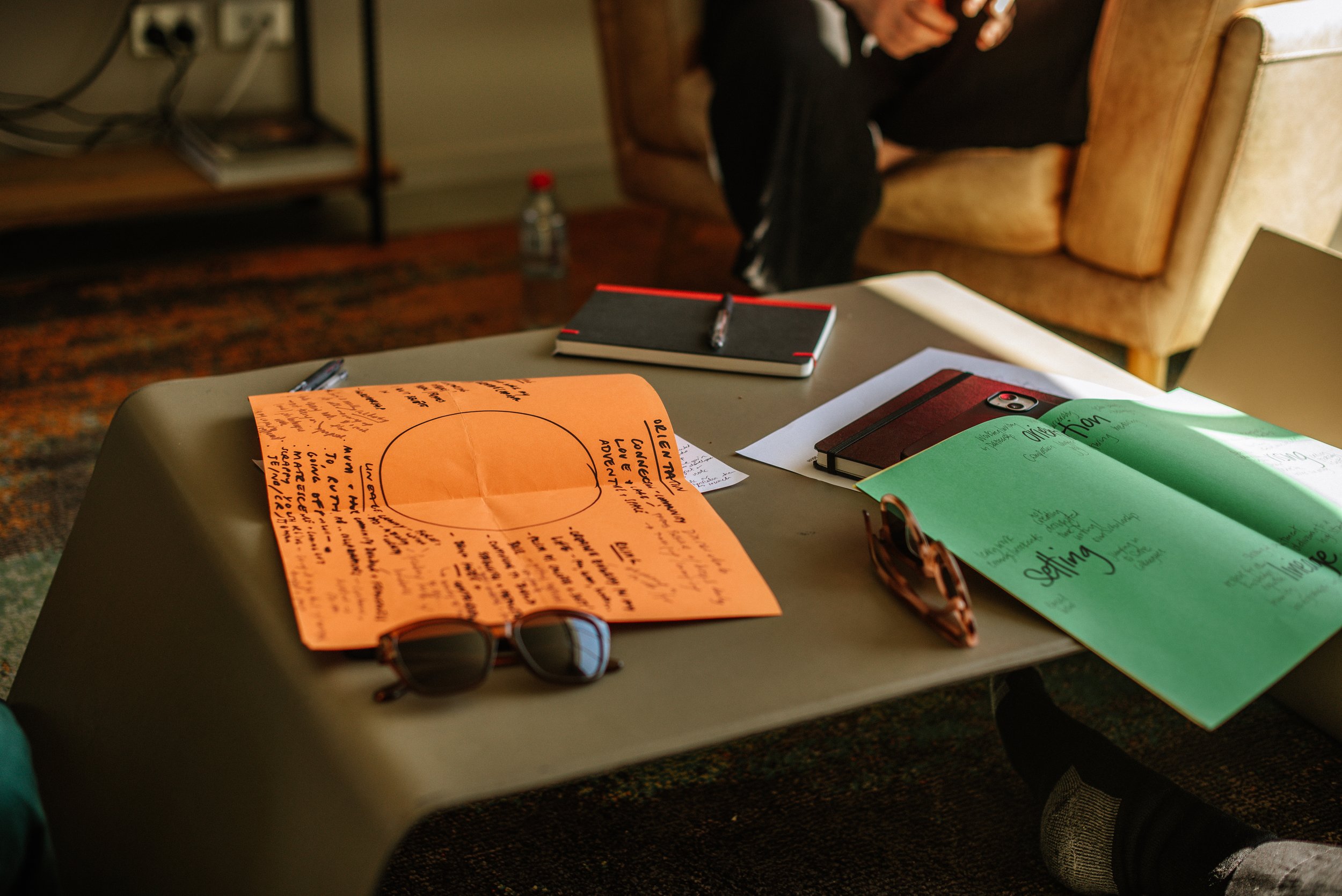An ode to being there
Being face to face, or kanohi ki te kanohi, brings a power we all intuitively feel. Whether it is seeing a long-absent friend or navigating a relationship difficulty, we all know that doing it in-person is better. But in work places that are geographically spread, more flexible, and with endless enabling technology, the very real advantages of meeting only behind screens are a powerful pull.
Don’t get me wrong, this isn’t a post that is going to shake my fist at the fangles of new technology, or call for a return to a romanticised past. Our post-pandemic world has facilitated unprecedented ease of connection. And we love it! We couldn’t work together as PRISM, or with so many of our inspiring collaborators, without the joy of the zoom meeting.
However, as we steered a number of teams through the difficult conversations inherent in any meaningful collaboration in the last few months of 2024, all of us at PRISM reflected on the transformation that can happen when we meet each other, as fellow humans, in physical space.
May had been leading conversations amongst organisations with a common purpose but had been struggling to get to the needed honesty and depth online, which they quickly cracked when they came together in person towards the end of 2024.
Jo was running a Springboard for a new team and reflected that without the ability to physically move the post-its around the room it would have been nearly impossible to access the creativity and collaboration that went into designing the approach they landed on.
Jess was facilitating a conversation for a culturally and geographically diverse team that had been trying for over a year to remotely land their strategy and processes. In three days physically together they were able to make more progress than the preceding twelve months.
“Face to face allows us to build the all important rapport we need to do hard work together. To really embrace each others’ humanness and understand why and how we are each approaching things in a particular way. ”
It allows for the exploration and emergence of ideas in the in-between times, when making tea or arriving in a space.
Tensions can be addressed and talked through for as long as is needed to find a resolution.
In the difficult moments it's clear that face to face we find it much easier to access that instinctive vulnerability and care we have for other human people - which can be easier to forget, or misinterpret from behind a keyboard.
We can collectively physically interact with the world around us, whether it's shuffling a wall of post-its, or pacing in circles, the ability to access our embodied cognitions is useful.
Sunrise over Torrent Bay, Tōtaranui Abel Tasman, Aotearoa New Zealand
In September of 2024, the core PRISM team came together face to face for the first time in the year, in the breathtaking peace of Torrent Bay on the Abel Tasman track. We had tramped there over the previous two days, as part of the haven ‘24 retreat. Together we drew diagrams and refined the vision for the work we wanted to do in the world and how we wanted that to feel. While zoom links will remain an essential connector as we bring this vision to life, there was a magic to breathing the same air while we imagined that couldn’t have been achieved in a million zoom rooms.
“As we navigate this hybrid world, the challenge isn’t choosing between digital convenience and physical presence—it’s knowing when each serves us best.”
At PRISM, we're developing intentional practices around when to prioritise being together:
For breakthrough moments in strategy and vision-setting, we commit to gathering in person.
When navigating tensions or misalignments within teams, we create space for face-to-face resolution rather than endless digital back-and-forths.
We've learned to recognise the warning signs of "Zoom fatigue" in our collaborations—when progress stalls, creativity dwindles, or connections feel strained—and use these as signals to plan our next in-person gathering.
Annually we make space and a container for deep reflection and rest at the haven retreats
And we're becoming more deliberate about designing our physical meetings to maximise what can only happen in shared space: dedicated time for those serendipitous conversations, embodied thinking, and the shared meals and experiences that transform colleagues into collaborators.
The digital tools that connect us across distance remain invaluable. But as we've witnessed time and again, there's an alchemy to sharing physical space that transforms both our work and our relationships. In a world where efficiency often trumps effectiveness, we're rediscovering that sometimes the most productive thing we can do is simply be there.
What practices are you developing to balance the digital and physical dimensions of your work? We'd love to hear how you're navigating this terrain.


